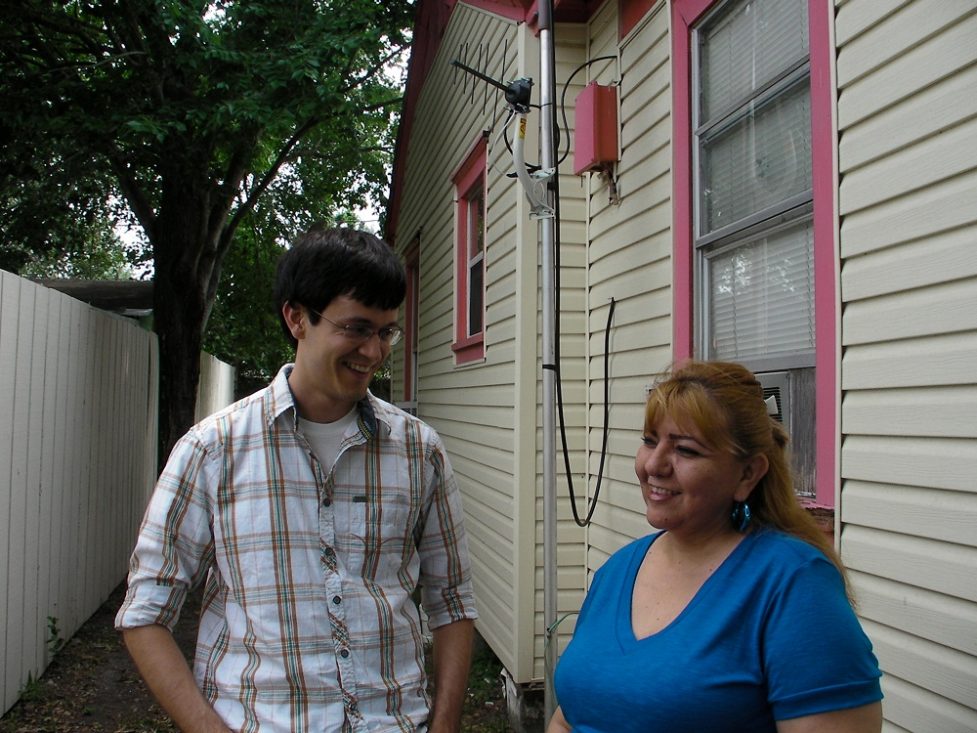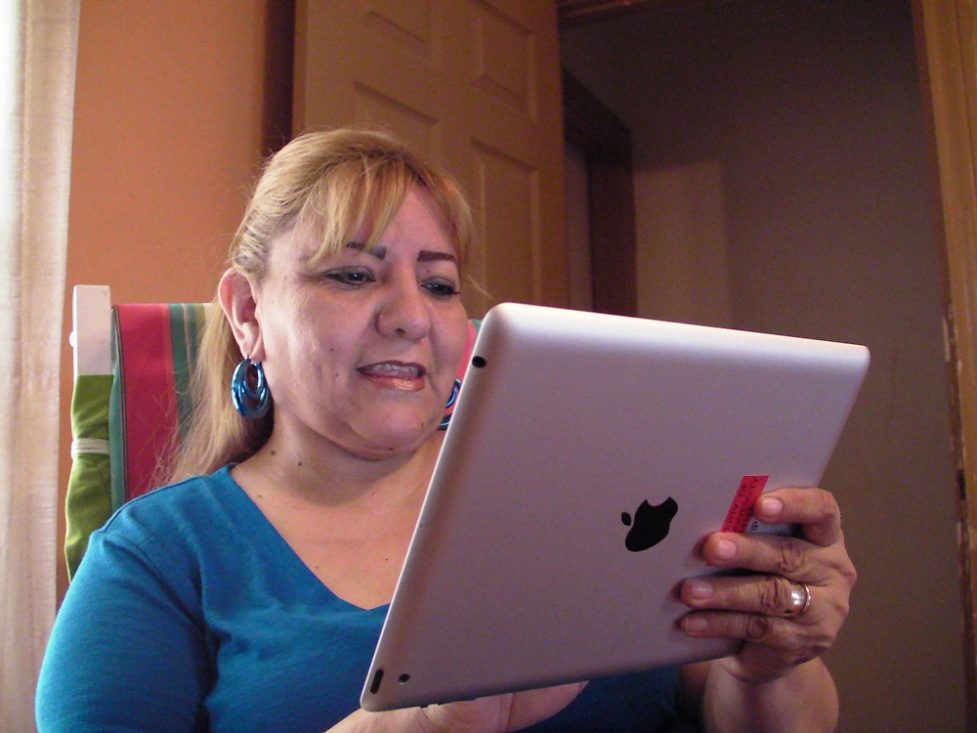
Thanks to a partnership between Rice University researchers and Houston nonprofit Technology For All (TFA), Houston grandmother Leticia Aguirre began hosting what’s believed to be the nation’s first residential “Super Wi-Fi” hot spot this month. Super Wi-Fi, a long-range, wall-piercing version of Wi-Fi that is broadcast on unused TV channels, could be a boon for both rural and urban residents who lack broadband access.

Check out the release…..
Houston grandmother is nation’s first ‘Super Wi-Fi’ user
Rice University, Houston nonprofit use dormant TV channel for residential broadband
HOUSTON — (April 19, 2011) — When the Federal Communications Commission worked out the rules last fall to convert unused TV channels for a new long-range, wall-piercing version of Wi-Fi, Houston resident Leticia Aguirre had no way of knowing that she’d host the nation’s first residential “Super Wi-Fi” hot spot.
“I’ve wanted to have the Internet for a long time, but it’s very expensive” said Aguirre, 48, a working grandmother and homeowner who’s never had a reliable Internet connection at her home.
Thanks to a partnership between Rice University wireless communications researchers and Houston nonprofit Technology For All (TFA), Aguirre’s home became a Super Wi-Fi hot spot this month. TFA and Rice plan to add more Super Wi-Fi links in Aguirre’s neighborhood in coming months, and with companies racing to develop Super Wi-Fi technology, the type of network that Rice and TFA are deploying for 3,000 residents in East Houston could become a common fixture in cities and rural areas in the coming decade.
“We have federal support from the National Science Foundation to develop this technology in an open-source way,” said Rice’s Edward Knightly, professor in electrical and computer engineering, whose research group built the prototype Super Wi-Fi equipment that Aguirre is using. “Ultimately, we want to develop this technology in such a way that it benefits the most people by accessing the right spectrum for the right users. Having Mrs. Aguirre as our first user really shows the potential benefits for people who’ve been underserved with traditional broadband.”
When Knightly’s research group teamed up with TFA to launch a free community broadband Wi-Fi network in the East Houston neighborhood of Pecan Park in 2004, Aguirre was one of the first homeowners to agree to host a Wi-Fi hot spot. That network, TFA-Wireless, now serves a three-square-mile area. But Aguirre, who lives at the edge of the network, has never received a good Wi-Fi signal at her home.
Aguirre said she got so frustrated with the traditional Wi-Fi that she considered asking TFA to remove the Wi-Fi antenna from her home.
“But I need the Internet to see that my paychecks have been deposited and to do other things,” she said. “When they called me to see if I wanted to try this, it was an answer to my prayers.”
Aguirre said she is looking forward to using email and Skype to stay in touch with friends and family, including her three children and her five-year-old grandson, and to watching religious videos online and learning more about how a computer can help her in her daily life.
The original TFA-Wireless network was designed as a test bed for urban “multihop” Wi-Fi technology. In late 2010, just as the FCC established its rules for Super Wi-Fi, Knightly’s team received a new grant from the National Science Foundation to incorporate Super Wi-Fi into the TFA-Wireless network.
“Mrs. Aguirre was the perfect user for this because of the problems we had serving her with traditional Wi-Fi,” said Ryan Guerra, a Rice graduate student who spent several months creating the Super Wi-Fi equipment that TFA-Wireless installed at Aguirre’s home. To users, the new hot spot looks like any other; it can be accessed with any Wi-Fi device. Behind the scenes, the network uses “dynamic spectrum access” to automatically shift between traditional Wi-Fi and unused UHF digital TV channels to provide the best possible coverage.
“This Super Wi-Fi technology is a quantum leap in terms of the end-user experience that it will allow us to provide to users on our network,” said Will Reed, president and CEO of TFA.
“The fact that this is happening in a community-broadband setting is significant as well, because this technology has a real potential to break down barriers and bring broadband to underserved urban and rural communities,” said Reed, who has served both as an alternate member of the FCC Consumer Advisory Committee and as a member of the FCC Consumer Advisory Committee Working Group on Rural and Underserved Populations.
Other Rice Networks Group members who participated in the project include Rice graduate student Oscar Bejarano, Rice undergraduates Subhash Doshi and George Chen, and visiting undergraduate Christopher Holmes from Georgia Tech.
Video on prospect of consumer-based ‘Super Wi-Fi’






